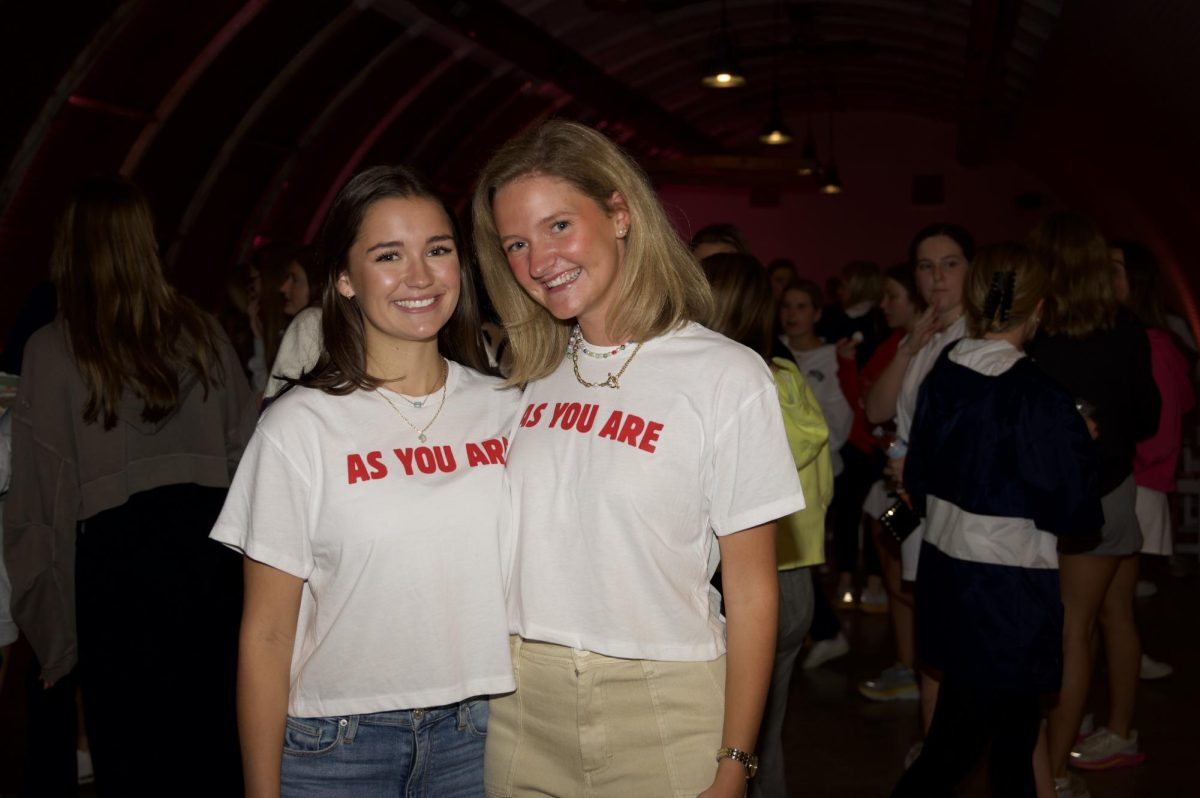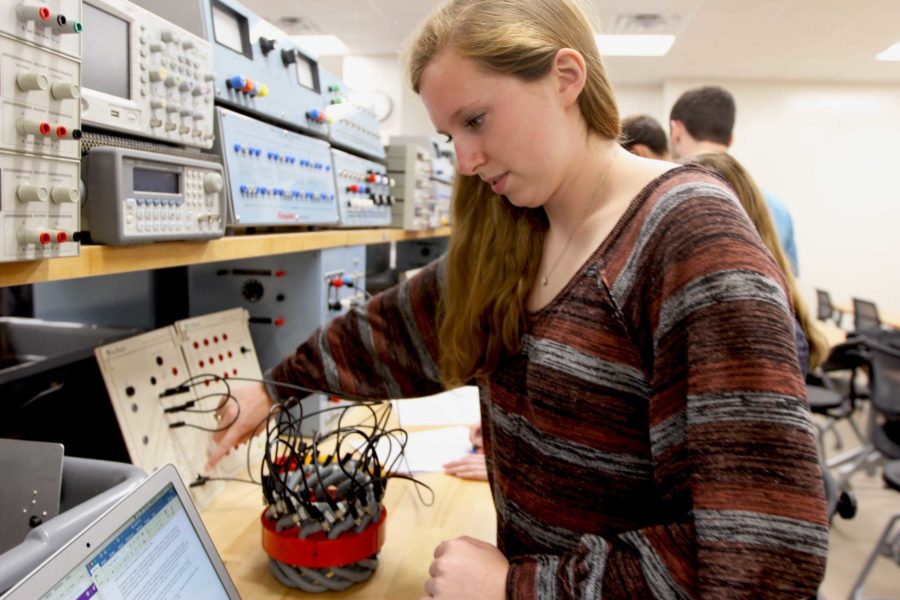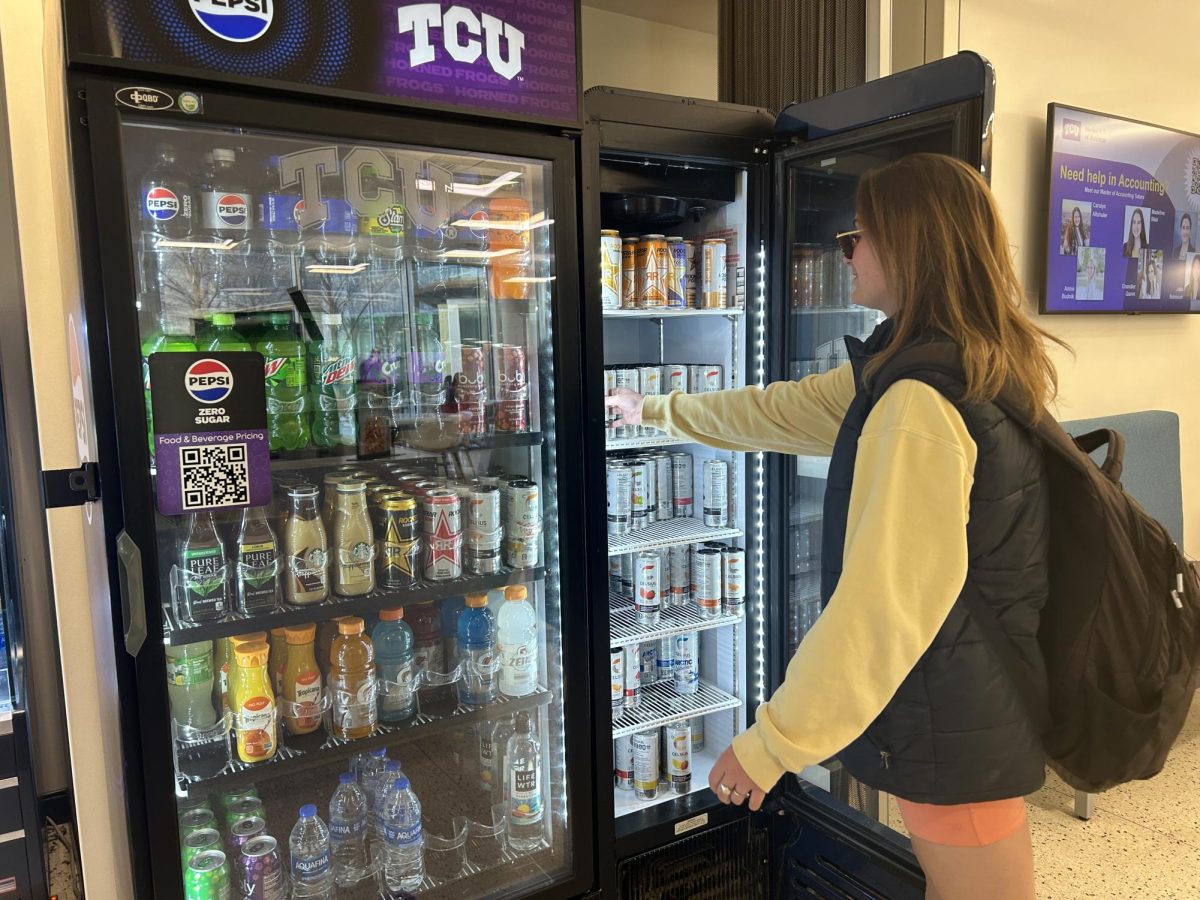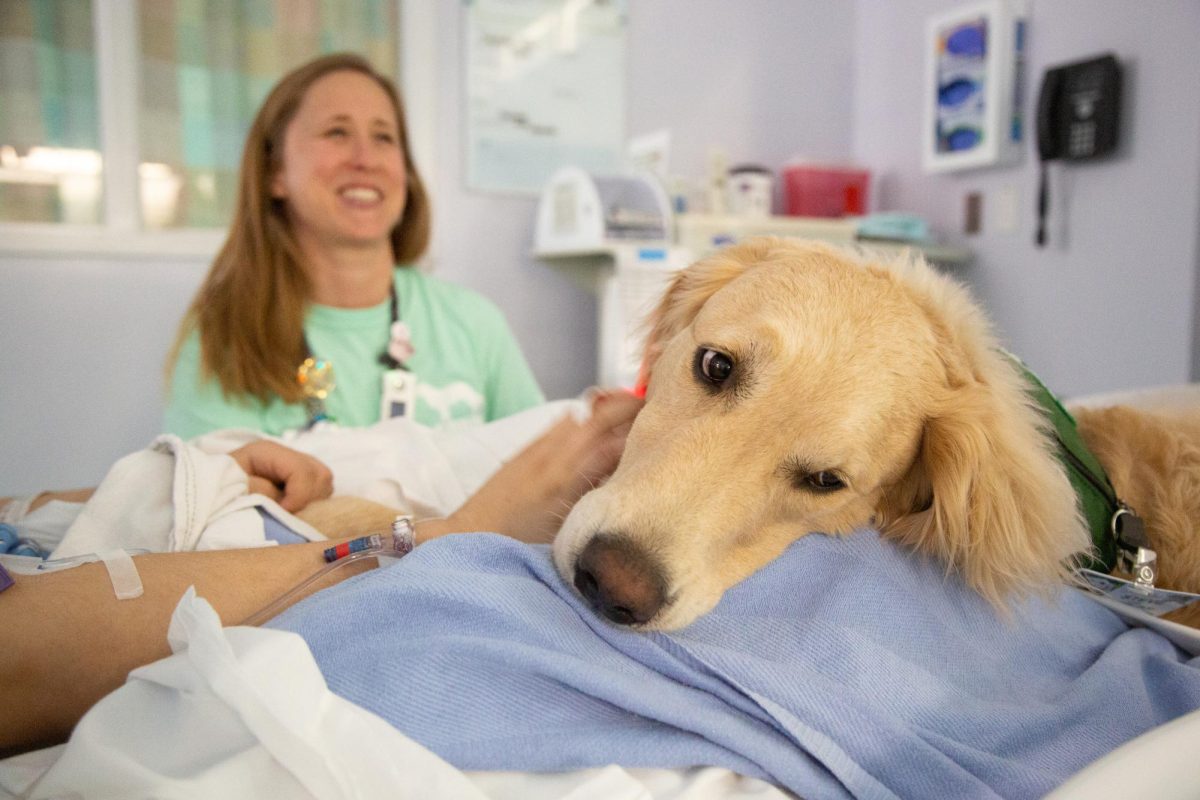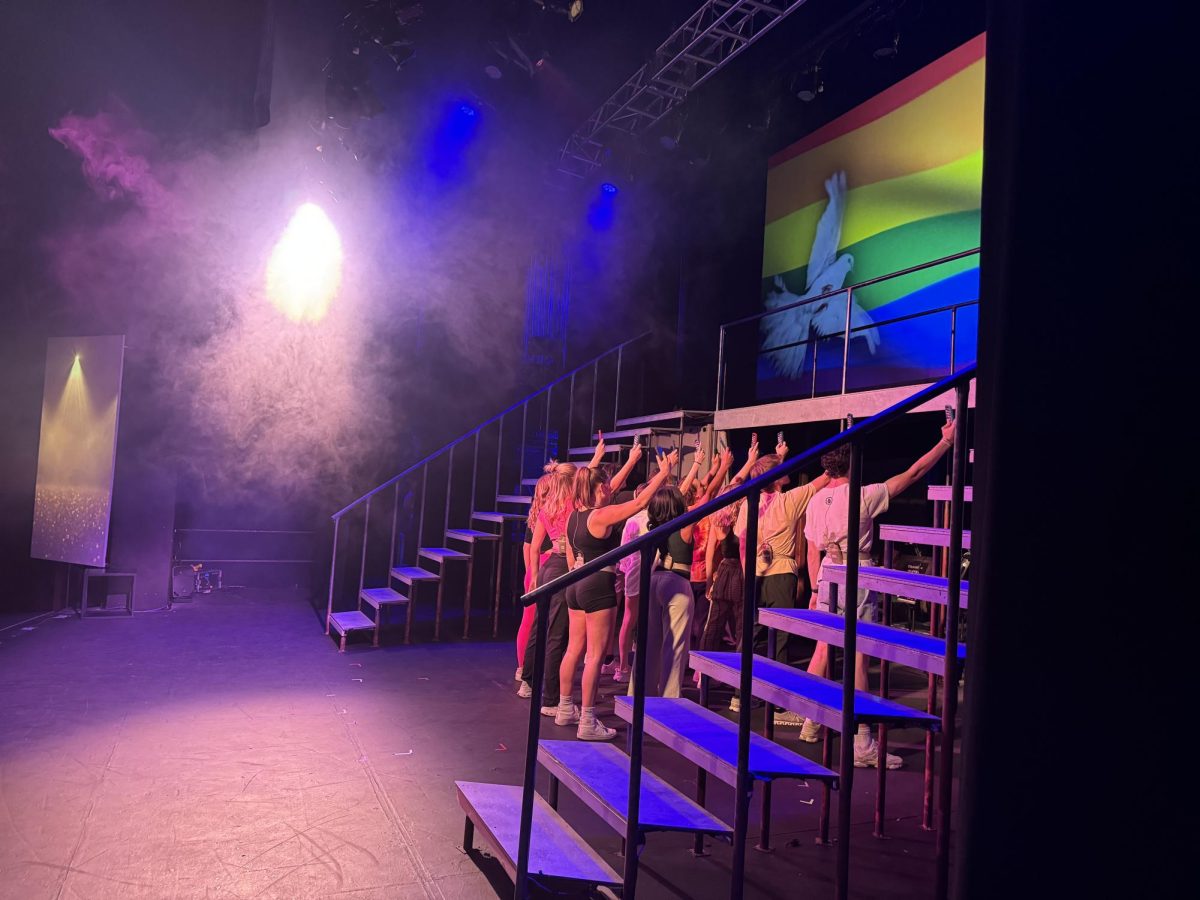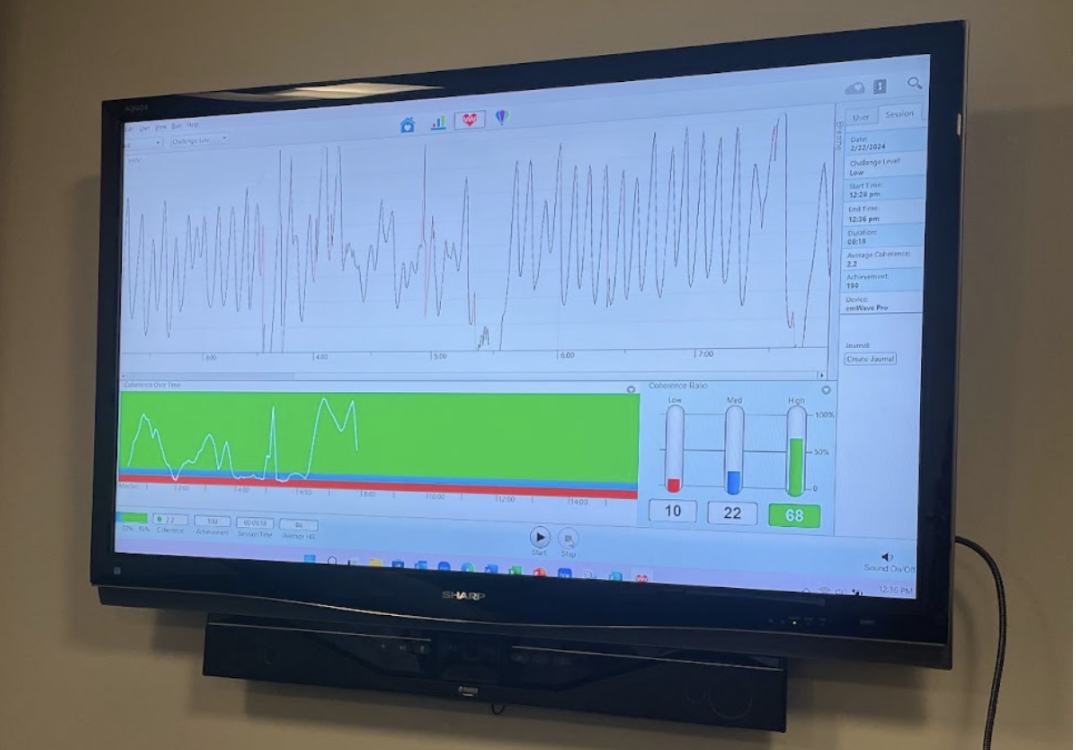Just a few years ago, Lindsey Elliott didn’t know anything about engineering and didn’t think it would be part of her future.
Elliott’s plans changed when, on a college visit to Penn State, she listened to a female student in the College of Engineering talk about using the subject to work on roller coasters.
“She was cool and I thought wow, that’s something I’d be interested in,” Elliott said.
Elliott is one of 70 female engineering majors at TCU. Even though women make up 25 percent of the engineering majors at TCU, the same cannot be said for the rest of the country.
Nationally, women hold less than 25 percent of all science, technology, engineering and math jobs. Commonly referred to as STEM, these fields have historically been dominated by men, and the trend doesn’t seem to be changing.
Even as the percentage of college-educated women in the workforce has increased, the number of women in STEM fields remained at 24 percent from 2000 to 2009 according to the U.S. Department of Commerce.
The gender gap is smaller in biosciences, social sciences and math, but women are still greatly outnumbered by men in fields such as computer science and engineering, according to the National Science Foundation.
Part of the reason for this lack of parity is women are not encouraged in math and science as readily as boys, said Diane Snow, dean of the John V. Roach Honors College and professor of neuroscience in the College of Science and Engineering.
“It’s a problem that starts as early as birth,” Snow said. “There’s a great deal of research showing we treat girls very differently than boys from day one and continue to develop different expectations from that point on.”

These differing expectations can impact the confidence of young women, further discouraging them from entering STEM fields, Snow said.
“If being welcomed into science is not the norm, and if the practice in science-related skills is not developed early on for girls, they will also lack self confidence in these fields as they progress,” Snow said.
Encouraging young girls to join STEM must include “overcoming that natural way of thinking that girls are better in arts and humanities,” said Jessie Yates, a senior biology major.
“The science field has always been so male-dominant,” Yates said. “In school, they always say boys are just better at math and science.”
Gender stereotypes have historical roots, said Joanne Greene, professor in the Department of Political Science.
“These stereotypes go back at least to the day when women’s brains were considered inferior to men,” Greene said. “Women got involved in the sciences in limited numbers in the early 1900’s, but in often segregated ways.”
Women who entered science fields were often encouraged to pursue topics that were considered more suitable for women, such as child psychology or nutrition.
This gender stereotyping has continued and can lead some teachers to give up on their female students who struggle in math and science, said Jessy Patricoski, a junior biology major.
“I was horrible at math,” Patricoski said. “I went for help and one of the math teachers just brushed me off and told me I was wasting his time. I think he more readily helped the boys. I feel like sometimes teachers fall into these stereotypes and just roll with them.”
After finding a tutor, Patricoski’s math skills improved. Now it’s her minor.
“I always just assumed I’d do English or art,” she said. “Now I love math.”
Despite these stereotypes, both men and women are equally capable of performing in STEM fields if they are given equal access to the subjects and support in pursuing them, Snow said.
“However, what’s not equal is access,” Snow said. “Bias – both conscious and unconscious – is a major factor in how well girls get to participate in science learning.”
STEM jobs can offer less family-friendly flexibility, which may also deter women from entering the field, according the U.S. Department of Commerce.
“Women are still, all these years later, assumed to be greater nurturers. There is still an expectation that they will still take charge of household responsibilities,” Snow said. “They typically have greater family obligations- not just bearing and raising children, but also caring for elderly parents or other family members.”
Balancing family obligations with the demands and time commitment of a career in a STEM field is not an ideal recipe for success, Snow said.

“I think the question of having kids becomes really hard for all of us,” said Christine Pho, junior physics major. “I definitely think about how my eggs are drying up.”
Patricoski said she was shocked when a friend suggested that instead of going to medical school she could marry a doctor and stay home to take care of her future children.
“I don’t think there’s any problem with wanting to get married and stay at home with your kids, but that’s not the only option,” Patricoski said. “I may marry a doctor or I may marry a garbage man. None of those things matter because I’m going to be a doctor.”
Gender Bias in the Field
Women who do enter a STEM field face a number of challenges, including gender bias.
“Women have to prove themselves more in these fields than men do,” Elliott said. “Time after time, stepping up to the plate, taking on a little extra initiative and taking on extra work to prove themselves.”
One study found that both male and female faculty judged a female student to be less competent and less worthy of being hired than an identical male student. They also offered her a smaller starting salary and less career mentoring.
Patricoski said she personally experienced gender bias from a professor when she was the only female student in a summer physics class at her home in Illinois.
When Patricoski stepped out to use the restroom during a lecture, the professor told the class of men, “that’s why there’s not a lot of them here.”
Patricoski learned about the professor’s comment from another classmate and said she knew she had been singled out for being female.
“I physically just didn’t believe it,” she said. “It made my skin crawl. I didn’t want to put up with it.”
Patricoski said she has gotten used to these kinds of comments, but the fear of being perceived as incompetent still affects the way she acts in class.

“Sometimes I’m worried to ask questions that might be seen as stupid,” she said. “I’ll go home and figure it out myself instead.”
Although she has not experienced gender bias in the classroom, Elizabeth Torres, a senior mechanical engineering major, said she noticed she was treated differently while working at a summer internship.
“I distinctly remember having some heads turning wherever I professionally presented my work because some of my male counterparts didn’t think that I had it in me to perform,” she said. “This nonchalant undermining is only another motivator for my continual self-improvement.”
Negative gender bias can even be aimed at female professors, Pho said.
“I don’t think people realize that they speak differently about their male and female professors,” Pho said. “Students will complain regardless, but the types of attacks are more personal against the women.”
Male professors who offer challenging courses are seen as intelligent, but female professors who do the same are viewed as incompetent teachers who don’t adequately prepare their classes, Patricoski said.
“People are so quick to assume that the teacher is incompetent when she’s a woman,” Pho said. “It makes me feel discouraged and I think it affects anyone who is thinking about becoming a professor.”
Part of the problem is that even when there are larger numbers of women in the science fields, they often remain at lower level positions, Snow said.
“Way too many women do not stay in science to reach positions of authority where they can impact policy,” Snow said. “In too many cases, women in the STEM fields are in worker bee positions. They do all the work but get little of the credit.”
Bridging the Gap
To increase the number of women in STEM, more girls need to be exposed to the fields at an early age, said Becky Bittle, assistant professor of professional practice in College of Science and Engineering at TCU.
“If you don’t know it exists, why would you even think about it?” Bittle said. “If you didn’t know there was such a thing as brain surgery would you think about going to be a brain surgeon? Probably not.”
Many younger students assume STEM fields involve isolation and boring number crunching, but Sergio Flores, an engineering teacher at the Young Women’s Leadership Academy in Fort Worth, said he tries to show his students that STEM fields can be exciting.
Flores takes his students on field trips to see engineers at work at companies such as Lockheed Martin, Toshiba and Bell Helicopter.
“When we take them on field trips, it actually gets them excited to want to go do these jobs,” he said. “They aspire to be engineers or something in STEM.”
Giving young women this kind of hands-on experience is one possible way to increase gender parity in STEM fields, Snow said.
“It’s criminal in my eyes that such a vibrant area of study, as scientific discovery gets a bad rap from those who insist on making it boring and irrelevant,” she said. “Science is awesome and for many, once they get to see it in action, they become hooked.”
Even though parity has not yet been reached, women are becoming more highly sought after in STEM fields, Bittle said.
“Everyone is starting to see the value of having all of those points of view and they’re starting to see the different skillsets that people can bring,” Bittle said.
A number of scholarships, fellowships and grants are being offered to encourage women to pursue these degrees, according to U.S. News.
Although she sometimes feels intimidated by the number of successful males in the field, Yates said, female role models and peers motivate her to continue pursuing a degree in biology. “There are those few women in the department and I want to be just like them,” Yates said. “They seem just as smart as the men.”

Having a network of support that included both men and women helped Snow continue to pursue her career in science.
Finding supportive role models and mentors is especially important for young women entering a STEM field, she said.
Patricoski said her biggest role model was a male neurosurgeon whom she worked with over the summer. Patricoski said the doctor never doubted her potential for success or treated her differently because she was a female.
“He never saw a gender difference,” she said. “He saw no gap.”
For Patricoski, a passion to help people and the desire to prove herself encourages her each day to ignore the biases she faces and continue on the path to medical school.
“I have the work ethic and intelligence to do it,” she said. “Even if it’s just one woman at a time, it closes the gap.”


